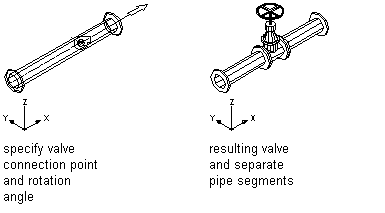In the block-based building environment, you begin part definition by specifying the behavior of the part family. Every part size in a part family has the same behavior. You then specify a type, subtype, layer key, and insertion method for each part family.
Part Type
Part type refers to the main category for the part family. It defines unique characteristics and behaviors for the part sizes, such as the ability to assign flow annotation to an HVAC part size. Types are predefined by the application and cannot be modified. Therefore, select a type that is similar to the part sizes.

Example of MVPart Builder (New Part) dialog box
Part Subtype
Part subtype is the subcategory for the part family. It is useful for grouping similar parts. The subtype can be used as a filter method for part selection in the Add and Modify dialogs. Therefore, you should select a descriptive subtype name for easy identification. You can also enter a new subtype if the desired subtype is not listed.
Layer Key
You assign a layer key to the part family for automatic layer mapping of part sizes. The same layer key is used for all part sizes of a part family. When you add a part that has a specified layer key to a drawing, the part is placed on the layer to which it is mapped. For example, according to the Aecb layer standard (AecbLayerStd4.dwg) and associated Mech - AIA 256-color layer key style, the Air Handling Unit layer key is mapped to the M-HVAC-Eqpm layer. When you add an air handling unit to your drawing, it is assigned to the M-HVAC-Eqpm layer. Only those layer keys predefined in the layer key style selected for the current drawing are available for selection in Content Builder. To learn more about layer keys, see .
Insertion Method
There are 2 insertion methods for placing parts in your drawing: anchor and breaks into.
When a part is inserted using the anchor method, the part anchors to the segment or object selected. This enables the parts to act together as one. For example, a louver is defined to use the anchor method of insertion. When you add a louver to your drawing, it is anchored to a segment. If the segment is moved, the louver moves with it.

When a part is inserted using the breaks into method, the part breaks into the segment or object selected. The part remains as an individual component. For example, when you add a valve to a segment, the segment is broken into 2 separate segments. You can move the valve along the run and the connecting segments are trimmed or stretched accordingly.

Parts that are inserted using the breaks into method are sometimes referred to as in-line parts.
To have the option of choosing an insertion method when you add the part to a drawing, specify both insertion methods when defining the part. To have the part behave similarly to a standard AutoCAD® block during insertion, specify no insertion method when defining the part.